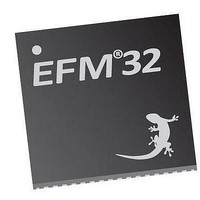EFM32-TG822F32-SK Energy Micro, EFM32-TG822F32-SK Datasheet - Page 6

EFM32-TG822F32-SK
Manufacturer Part Number
EFM32-TG822F32-SK
Description
MCU, MPU & DSP Development Tools TG822 Sample Kit
Manufacturer
Energy Micro
Datasheet
1.EFM32-TG822F32-SK.pdf
(64 pages)
Specifications of EFM32-TG822F32-SK
Processor To Be Evaluated
EFM32
Lead Free Status / RoHS Status
Lead free / RoHS Compliant
Available stocks
Company
Part Number
Manufacturer
Quantity
Price
Company:
Part Number:
EFM32-TG822F32-SK
Manufacturer:
EnergyMi
Quantity:
17
2.1.19 Voltage Comparator (VCMP)
2.1.20 Analog to Digital Converter (ADC)
2.1.21 Digital to Analog Converter (DAC)
2.1.22 Operational Amplifier (OPAMP)
2.1.23 Low Energy Sensor Interface (LESENSE)
2.1.24 Advanced Encryption Standard Accelerator (AES)
2.1.25 General Purpose Input/Output (GPIO)
2012-02-27 - EFM32TG822FXX - d0052_Rev0.95
The Voltage Supply Comparator is used to monitor the supply voltage from software. An interrupt can
be generated when the supply falls below or rises above a programmable threshold. Response time and
thereby also the current consumption can be configured by altering the current supply to the comparator.
The ADC is a Successive Approximation Register (SAR) architecture, with a resolution of up to 12 bits
at up to one million samples per second. The integrated input mux can select inputs from 4 external
pins and 6 internal signals.
The Digital to Analog Converter (DAC) can convert a digital value to an analog output voltage. The DAC
is fully differential rail-to-rail, with 12-bit resolution. It has one single ended output buffer connected to
channel 0. The DAC may be used for a number of different applications such as sensor interfaces or
sound output.
The EFM32TG822 features 3 Operational Amplifiers. The Operational Amplifier is a versatile general
purpose amplifier with rail-to-rail differential input and rail-to-rail single ended output. The input can be set
to pin, DAC or OPAMP, whereas the output can be pin, OPAMP or ADC. The current is programmable
and the OPAMP has various internal configurations such as unity gain, programmable gain using internal
resistors etc.
The Low Energy Sensor Interface (LESENSE
for up to 4 individually configurable sensors. By controlling the analog comparators and DAC, LESENSE
is capable of supporting a wide range of sensors and measurement schemes, and can for instance mea-
sure LC sensors, resistive sensors and capacitive sensors. LESENSE also includes a programmable
FSM which enables simple processing of measurement results without CPU intervention. LESENSE is
available in energy mode EM2, in addition to EM0 and EM1, making it ideal for sensor monitoring in
applications with a strict energy budget.
The AES accelerator performs AES encryption and decryption with 128-bit or 256-bit keys. Encrypting or
decrypting one 128-bit data block takes 52 HFCORECLK cycles with 128-bit keys and 75 HFCORECLK
cycles with 256-bit keys. The AES module is an AHB slave which enables efficient access to the data
and key registers. All write accesses to the AES module must be 32-bit operations, i.e. 8- or 16-bit
operations are not supported.
In the EFM32TG822, there are 37 General Purpose Input/Output (GPIO) pins, which are divided into
ports with up to 16 pins each. These pins can individually be configured as either an output or input. More
advances configurations like open-drain, filtering and drive strength can also be configured individually
for the pins. The GPIO pins can also be overridden by peripheral pin connections, like Timer PWM
outputs or USART communication, which can be routed to several locations on the device. The GPIO
supports up to 16 asynchronous external pin interrupts, which enables interrupts from any pin on the
device. Also, the input value of a pin can be routed through the Peripheral Reflex System to other
peripherals.
TM
...the world's most energy friendly microcontrollers
), is a highly configurable sensor interface with support
6
www.energymicro.com












